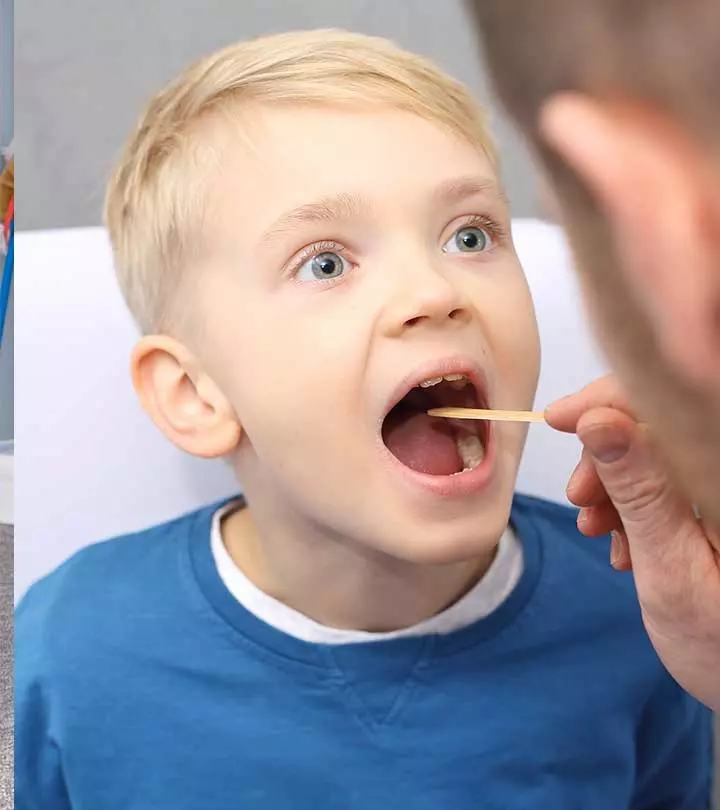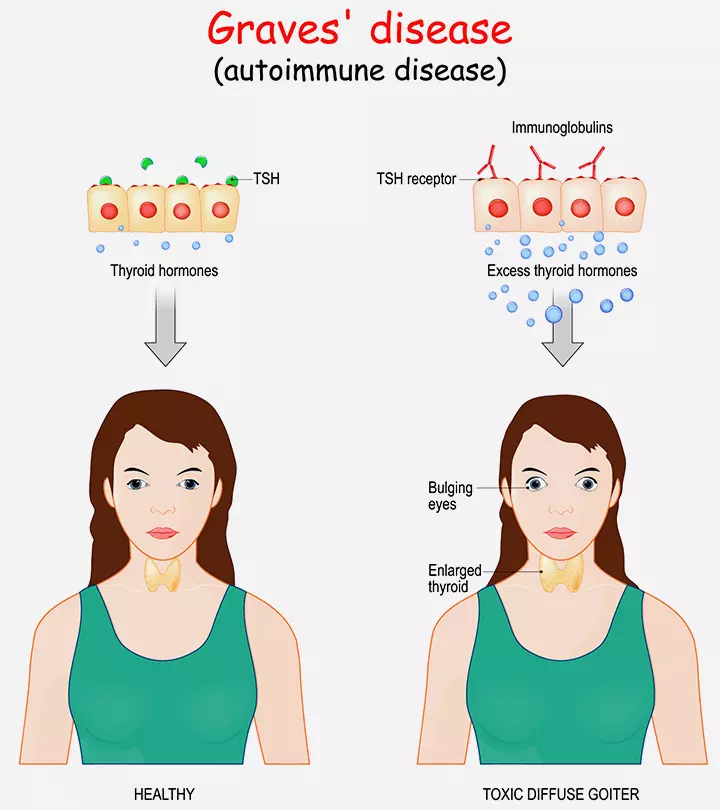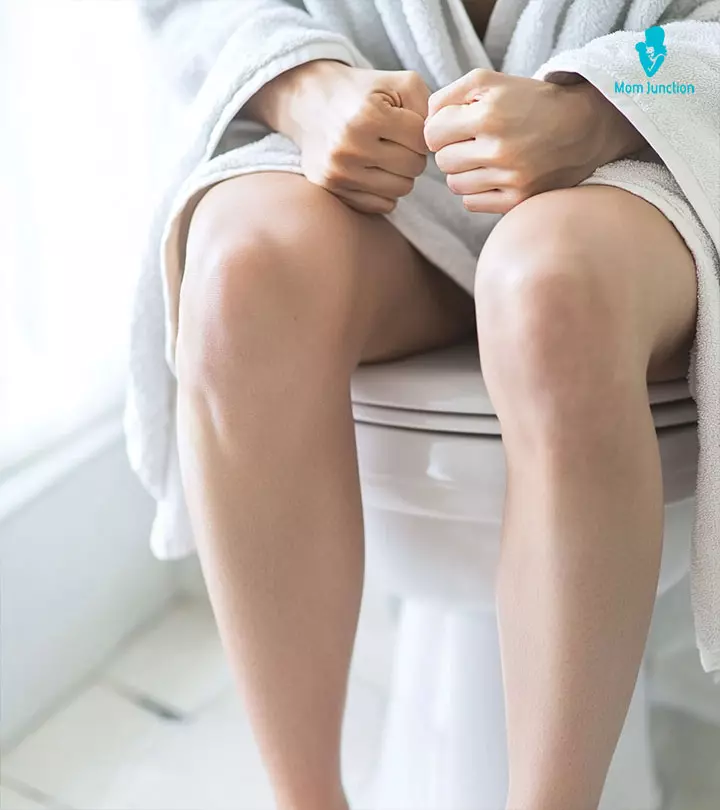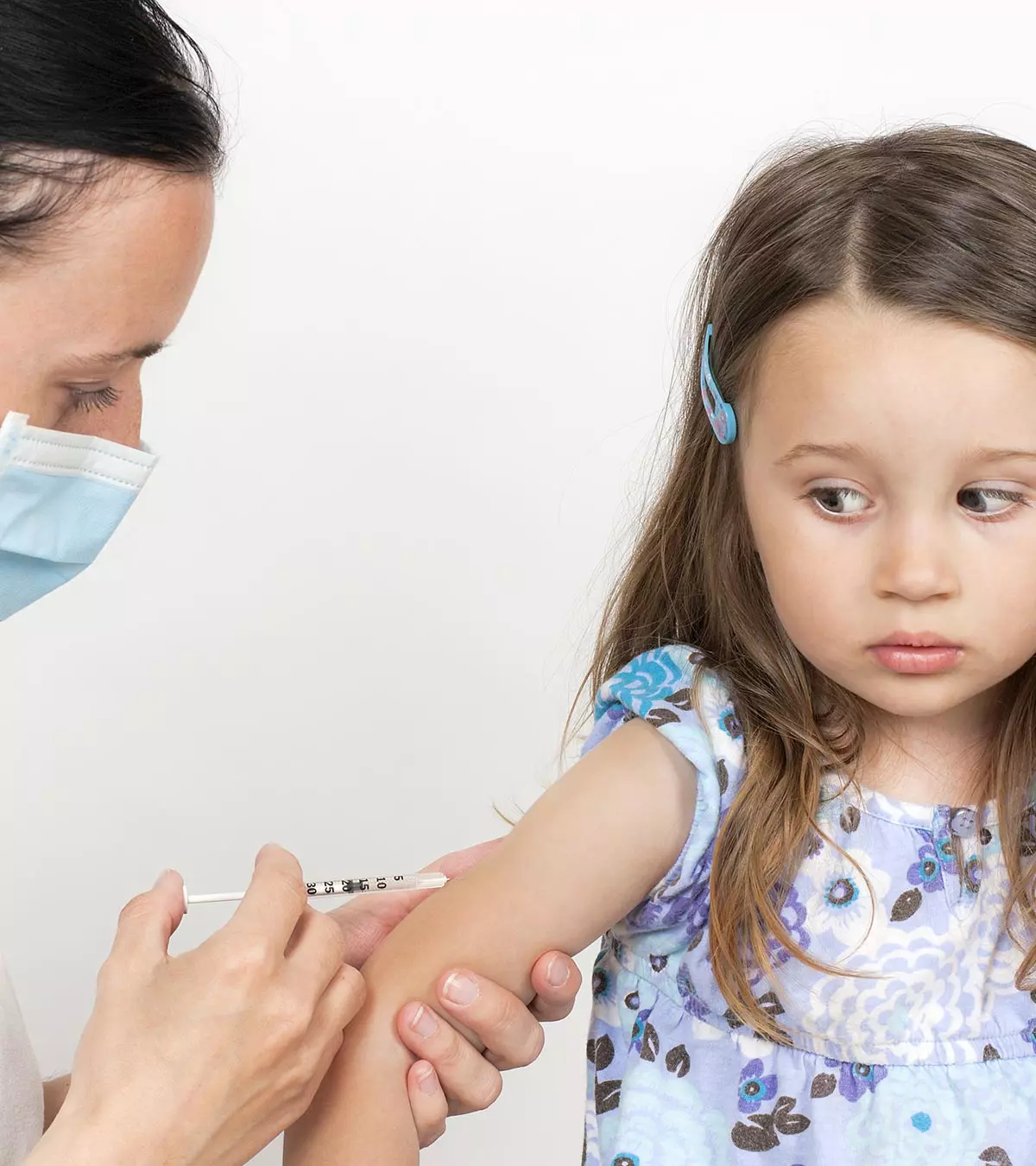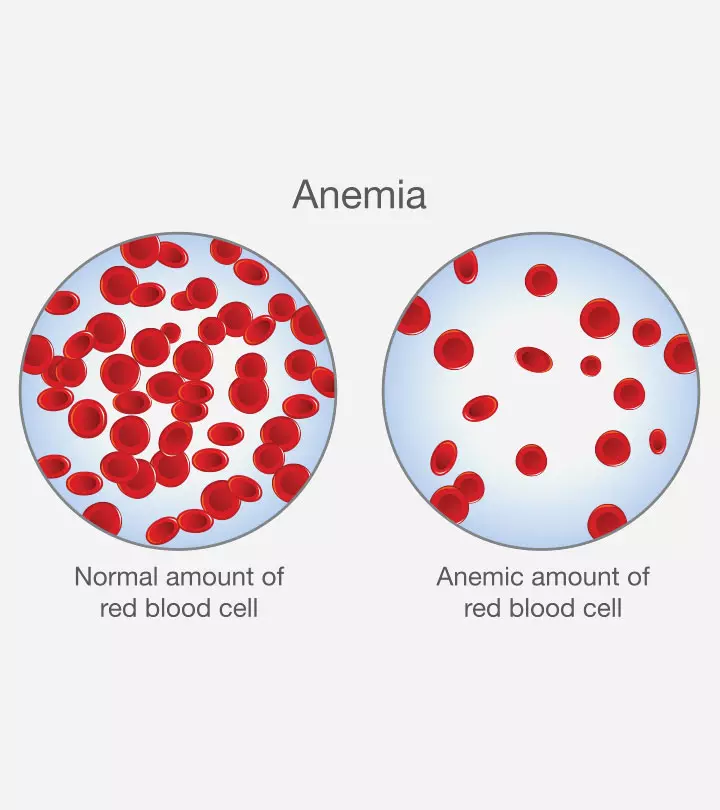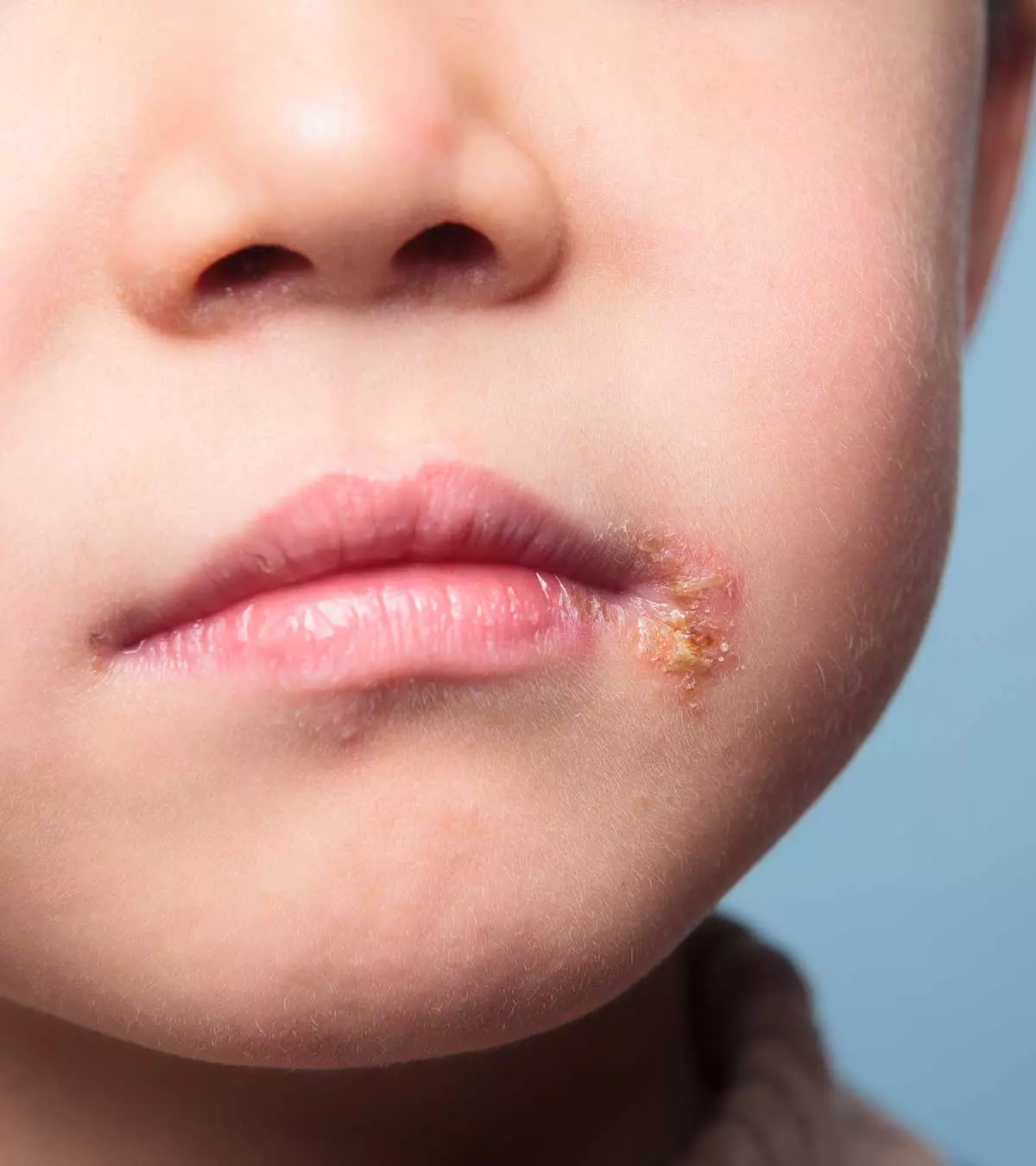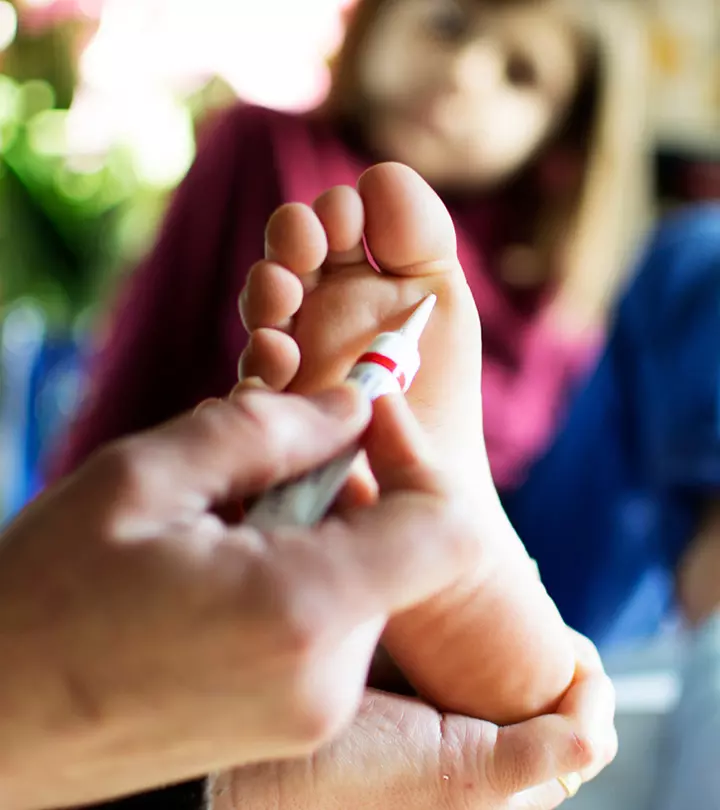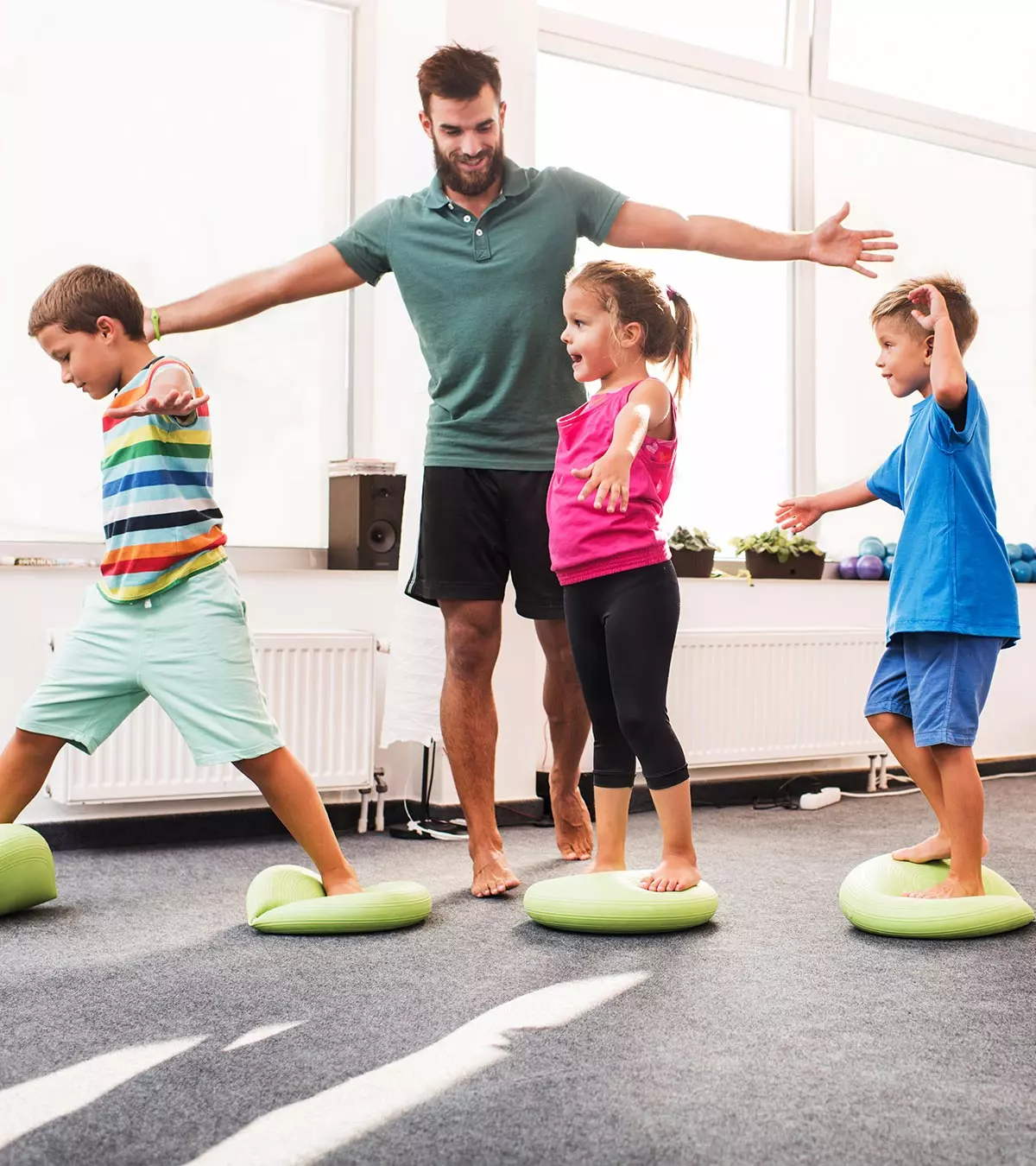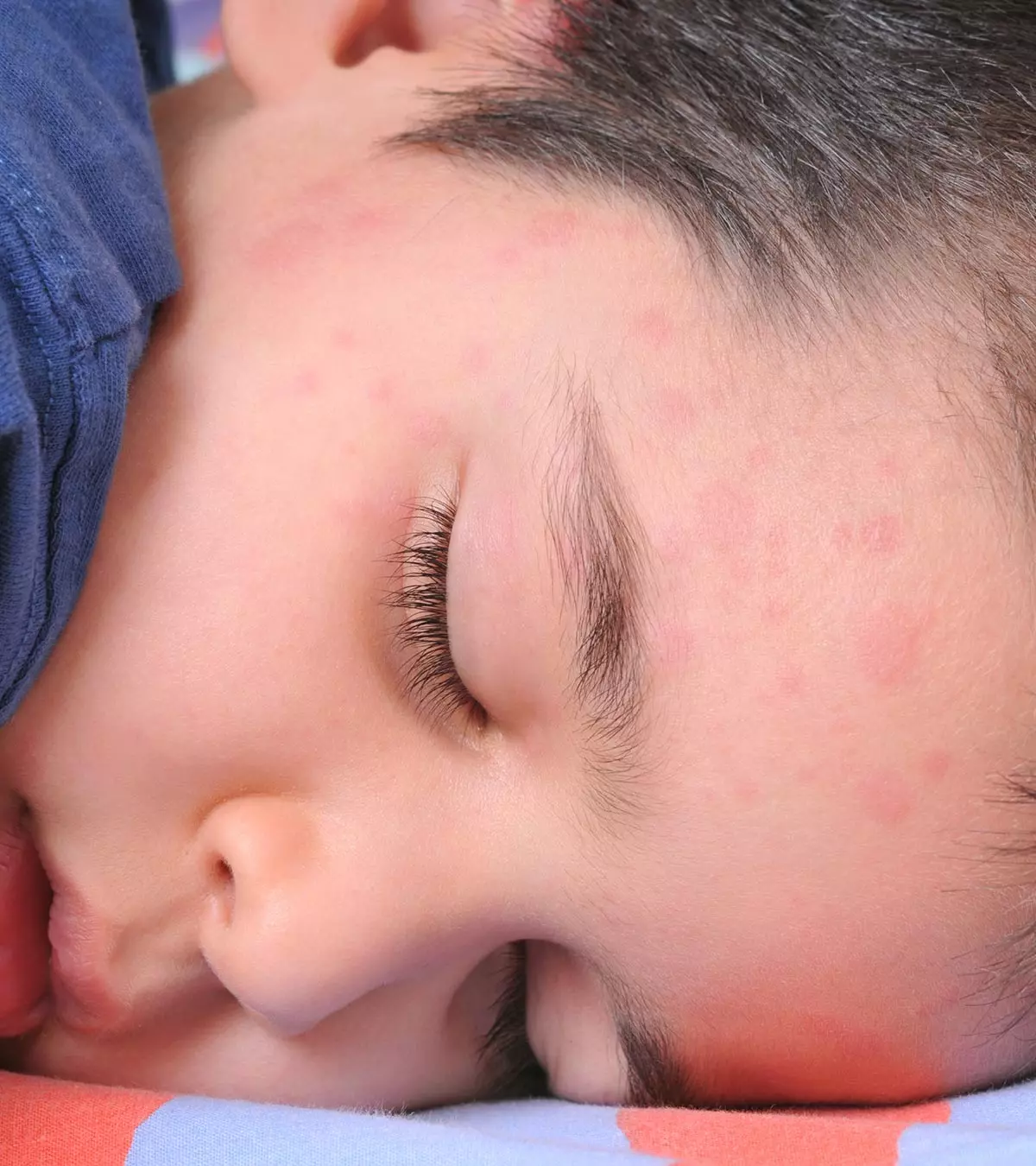
Image: ShutterStock
Hives or urticaria are reddish-pink rashes or patches that appear anywhere on the skin and can be triggered by a number of factors. These red welts are usually the skin’s reaction to an allergen such as an infection, foods, pollen, medicines, etc (1). In most cases, these hives disappear after a while. Read on to know more about the classification, causes, symptoms, diagnosis, and treatment of hives in children.

Key Pointers
- Hives or urticaria are reddish-pink skin lesions or patches that can be caused by various factors.
- These skin lesions can be itchy, painful, and even burning and can last either just a few days or longer than six weeks.
- The underlying causes of hives, such as bacterial or viral infections, may be contagious, although hives themselves are not.
- Allergens like food, medication, pollen, or animal encounters can trigger the release of histamine, which can lead to hives.
- Other factors that may cause hives include exposure to chemicals, excessive scratching, stress, and viral or bacterial infections.
Are Hives Contagious?
Hives can be itchy, painful, and even burn. Hives that go away in a few days or less than six weeks’ time are referred to as acute hives. Those that need more than six weeks to disappear or keep coming and going for more than six weeks are called chronic hives (2). Hives caused due to stress on the skin or exposure of the skin to external elements such as extreme cold or heat are referred to as physical urticaria.
Hives themselves are not contagious, but the disease that caused the hives may be contagious to others, such as viral or bacterial infections. Unless they are chronic, hives occur only when triggered and last no more than 24 hours (2). On a positive note, hives do not leave any trace of their existence – they don’t leave any scars or bruises on the skin.
Classification Of Urticaria
The simplest classification of urticaria has two types – acute and chronic (3). A wider classification helps you learn about physical or inducible urticaria (4) (5).
- Dermatographic urticaria, also known as skin writing
- Papular urticaria, a manifestation of papulesiA swollen, raised, noticeable spot on the skin. caused due to hypersensitivity to insects, especially mosquito bites
- Cold urticaria, caused when the skin is exposed to something extremely cold or cold weather
- Cholinergic urticaria is a chronic inducible urticaria caused due to sweating
- Contact urticaria, which results in rashes, occurs when the person comes into contact with a substance that triggers a breakout of hives
- Delayed pressure urticaria is when weals (wheals) appear on the skin due to the pressure on the skin, although after a delay of four to six hours
- Solar urticaria is when you get chronic hives due to sunlight exposure
 Quick fact
Quick factCauses Of Hives In Children
Hives are more often than not an allergic reaction. Red, swollen bumps on the skin appear when the blood cells react to an allergen and release a chemical called histamine (2) that causes the blood vessels under the skin to leak. Allergens that can cause hives include (4) (2):
- Food allergies from consuming eggs, shellfish, peanuts, milk
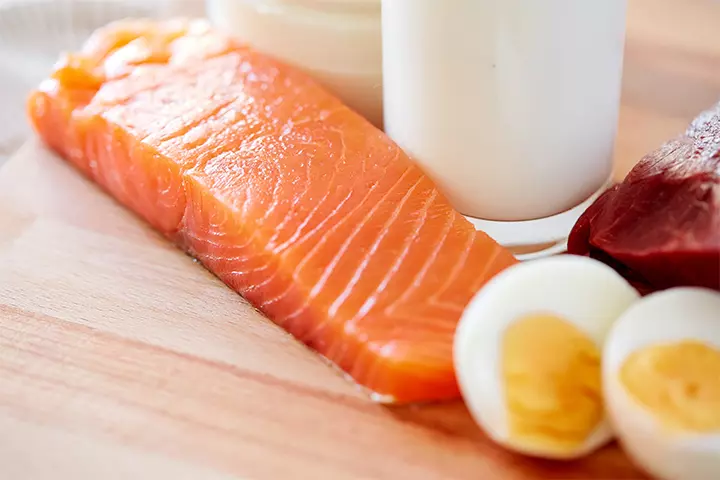
- Medications and injections or allergy shots
- Pollen
- Interaction with pets or other animals can trigger an allergic reaction
- Insect bites or bee stings
- Exposure to sunlight or extremely cold weather
If hives are not caused due to an allergen, it can be caused due to (5):
- A bacterial or viral infection in children (probably the commonest cause in children) (6)
- Exercise – usually due to the sweating after exercise
- Contact with chemicals
- Excessive scratching
- Excessive pressure on the skin from sitting in one position for a long time, carrying heavy weights such as a backpack over the shoulder, etc.
- Stress: Some kids can get chronic hives due to stress or anxiety. The itch and discomfort from hives can further add to their stress and worsen the situation. Recognizing the triggers of stress can help alleviate the symptoms effectively.
- In some rare cases, hives caused due to an allergic reaction may lead to systemic reactions like anaphylactic shockiAn extreme reaction to an allergen causing breathing difficulties and loss of consciousness, prompting immediate medical attention. , which warrants immediate medical attention.
 Point to consider
Point to considerSigns And Symptoms Of Hives In Children

Classic symptoms of hives include:
- Reddish raised bumps or welts on the skin, sometimes with a pale center (2).
- Hives can appear in clusters in one place or different places on the skin.
- The size of hives varies depending on various factors – you can have hives measuring just a few millimeters to some as big as a large plate
- These red welts can cause itchiness, pruritus, burning sensation, or pain
- Puffiness and swelling of the eyes, feet, hands, throat, lips, and even genitals in case the child also has angioedemaiFluid-filled swelling or inflammation beneath the skin often caused due to specific allergies or medications. (7).
In case of severe hives and anaphylactic shock, the child will have trouble breathing, may feel dizzy and even lose consciousness.
 Caution
CautionDiagnosis
A look at the child’s skin is often enough to determine hives. But a thorough physical examination and review of the child’s medical history are also done to determine the exact cause and type of hives (8). If hives are associated with fever, there could be an underlying bacterial or viral infection to take care of. The family’s medical history is also checked for possible things that the child may be allergic to.
In case of chronic hives, the doctor may ask you to keep a record of what the child is eating, drinking, and getting exposed to, to determine the cause of the breakout. Blood tests, allergy tests, and other diagnostic tests may be recommended (2).
The doctor may also expose the child’s skin to sunlight, frigid objects, or place heavy objects on the thighs to see if that would cause hives.
Treatment Of Hives In Children
The parent must first determine if the child has swollen lips or difficulty in breathing or is restless for no apparent reason since there may be some swelling in the airways that may suffocate and choke the child. If such symptoms are suspected, the child needs to be taken to the doctor or the nearest hospital’s emergency medical services immediately.
For chronic hives, your doctor may prescribe a mild antihistamine (h1 blockers) (1). Depending on the severity of the condition, the doctor may prescribe a stronger antihistamine, corticosteroids, or a combination of drugs. In some cases, the doctor may prescribe a steroid for a short duration to bring the hives down (9).
Remember that not all medications work for all. So if one course of treatment doesn’t work for your kid, the doctor may try another.
Managing Hives At Home
The best way to deal with hives is to try and prevent them. Here are a few tips to keep in mind when caring for children with hives (10).
- As mentioned above, if hives result from allergies in children, the first thing to do is remove the allergen. So don’t give the child food he or she is allergic to. Take your doctor’s opinion before reintroducing such food items into the child’s diet.
- Avoid using any soaps or bath products that are harsh on the skin. Stick to organic soaps or syndets that have no side effects. Sometimes, frequent bathing helps in reducing the itching and scratching. Also, frequent application of a water-based hypoallergeniciCharacteristic of a substance to cause fewer allergic reactions. moisturizing lotion will help alleviate the symptoms.
- Tell the child not to scratch or rub the hives. Rubbing and applying pressure will only further worsen the symptoms.

- As constant pressure should not be applied, avoid wearing tight clothes or placing weights on the body.
- If temperature or weather leads to a breakout of hives in the child, don’t let the child go out alone. When the child goes out, make sure the accompanying adult carries an auto-injector of epinephrine.
- If sunlight is the reason for hives in the kid, ensure that they wear sunscreen and cover the skin with protective clothing. Use umbrellas or hats as a shield from sunshine.
- If you suspect that medication is causing hives, inform your doctor and pharmacist about it.
In addition to these home care tips, a few of these natural or herbal remedies might help too.
Natural Remedies For Hives In Children
Here are some ways to ease or alleviate the hives in children.
- Cold compress is an excellent topical remedy to deal with hives. Tightly pack ice cubes in a cloth and apply on the affected areas to reduce swelling, burning, or itching sensation.
- Apple cider vinegar has antihistamine properties that help in reducing the inflammation quickly and also restoring the overall skin health of the child.
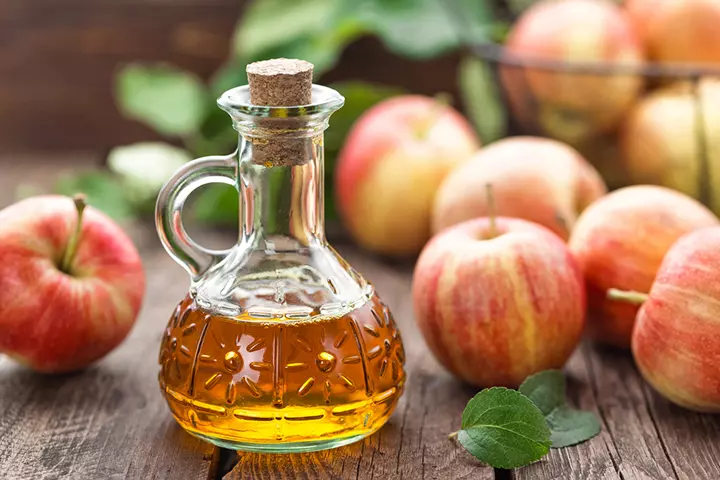
- Baking soda is anti-inflammatory and is one of the most popular home remedies for hives. Add a cup of baking soda to a tub of warm water and mix it well. Let the kid soak in it for at least 20-30 minutes. You can also apply a paste of baking soda and water on the affected areas.
- Ginger is like a wonder drug when it comes to healing hives. It is an antihistamine and anti-inflammatory, and attacks the genes and enzymes triggering the inflammation. It also acts as an immune system booster.
- Oatmeal also has anti-inflammatory properties that can help soothe the itching and irritation caused by hives on the skin.
- Turmeric is an antiseptic and an anti-inflammatory agent as well. It is a natural antihistamine and an effective antioxidant used for treating a variety of skin disorders including hives.
- Aloe vera‘s anti-inflammatory and anti-microbial properties can alleviate hives. Apply aloe vera gel to the affected areas and leave it for 15 minutes. Drinking aloe vera juice daily can also help fight hives but should only be done after consulting your pediatrician.

- Nettle is another natural antihistamine and has astringent properties, making it a great herbal remedy for hives. Drinking nettle green tea twice a day or taking nettle extract capsules every day can help manage hives better, but a doctor’s advice is a must before giving this to your child.
- Basil or Tulsi can also help fight hives. It helps in fighting the infection and reducing itchiness. Crush the basil leaves and apply the extract on the affected areas, or boil water with basil leaves and apply that on the affected area for relief.
- Witch hazel is an astringent you can apply topically on the hives, to reduce the inflammation and itching sensation.
Frequently Asked Questions
1. How long do viral hives last in children?
Viral hives may last for three to four days (6). These hives come and go normally and may not cause any serious complications.
2. What kind of viral infection causes hives?
Viral infections due to respiratory viruses, hepatitis, and mononucleosis may often lead to the development of hives (11).
3. What is the role of the immune system in the development of hives in children?
The immune system has a crucial role in causing hives in children. Chronic spontaneous urticaria (CSU) is believed to be autoimmune in nature, involving mast cells and basophils activation, the release of inflammatory substances, and the existence of autoantibodies (12).
4. Can hives in children be hereditary, and is there a genetic predisposition to developing hives?
Yes, hives in children can be inherited. A study revealed that chronic idiopathic urticaria (CIU) is more prevalent in immediate family members of those affected, indicating a genetic predisposition for hives development (13).
5. How can a parent prevent their child from scratching or aggravating their hives?
To prevent a child from scratching or worsening hives, parents can shorten their child’s nails, maintain well-moisturized skin, dress them in loose garments, and apply cool compresses to relieve itching. Also, seek guidance from a healthcare provider regarding suitable medications or treatments if needed.
6. Can hives in children be a sign of an autoimmune disorder?
Yes, hives in children can indicate an autoimmune disorder. About 45% of chronic spontaneous urticaria (CSU) cases are believed to have an autoimmune basis, involving factors such as autoantibodies, mast cell activation, and lymphocyte participation (12).
7. What are the long-term effects of hives in children?
Long-term hives in children, especially those lasting more than six weeks, might cause the itchy patches to swell and also cause intense itching. In some cases the welts may appear and fade repeatedly and at any time. While typically not dangerous, persistent hives can cause discomfort and impact a child’s quality of life (14). Thus, identifying triggers like food allergies, environmental factors, or autoimmune conditions through a medical evaluation is essential.
It is important to seek immediate medical attention when you notice hives in children. Although the condition is generally harmless, it may, at times, become severe, leading to an anaphylactic shock, depending on the cause. Hence knowing about its symptoms can help you get the right treatment in time. Hives in children can be successfully managed with antihistaminesiSubstances or medications used to treat allergies by blocking the action of histamines (allergens). and home remedies such as a cold compress, ginger, turmeric, and more. However, a doctor’s consultation is necessary before administering any of these treatments to avoid adverse reactions.
Infographic: Home Care And Remedies For Hives In Children
Hives are a common skin condition in children, manageable with home remedies and medications, including avoiding triggers, using over-the-counter antihistamines, and applying a cold compress. For more information on how to manage hives in children at home, scour through the infographic below.
Some thing wrong with infographic shortcode. please verify shortcode syntax
Illustration: What Are Hives In Children: Causes Symptoms And Treatment
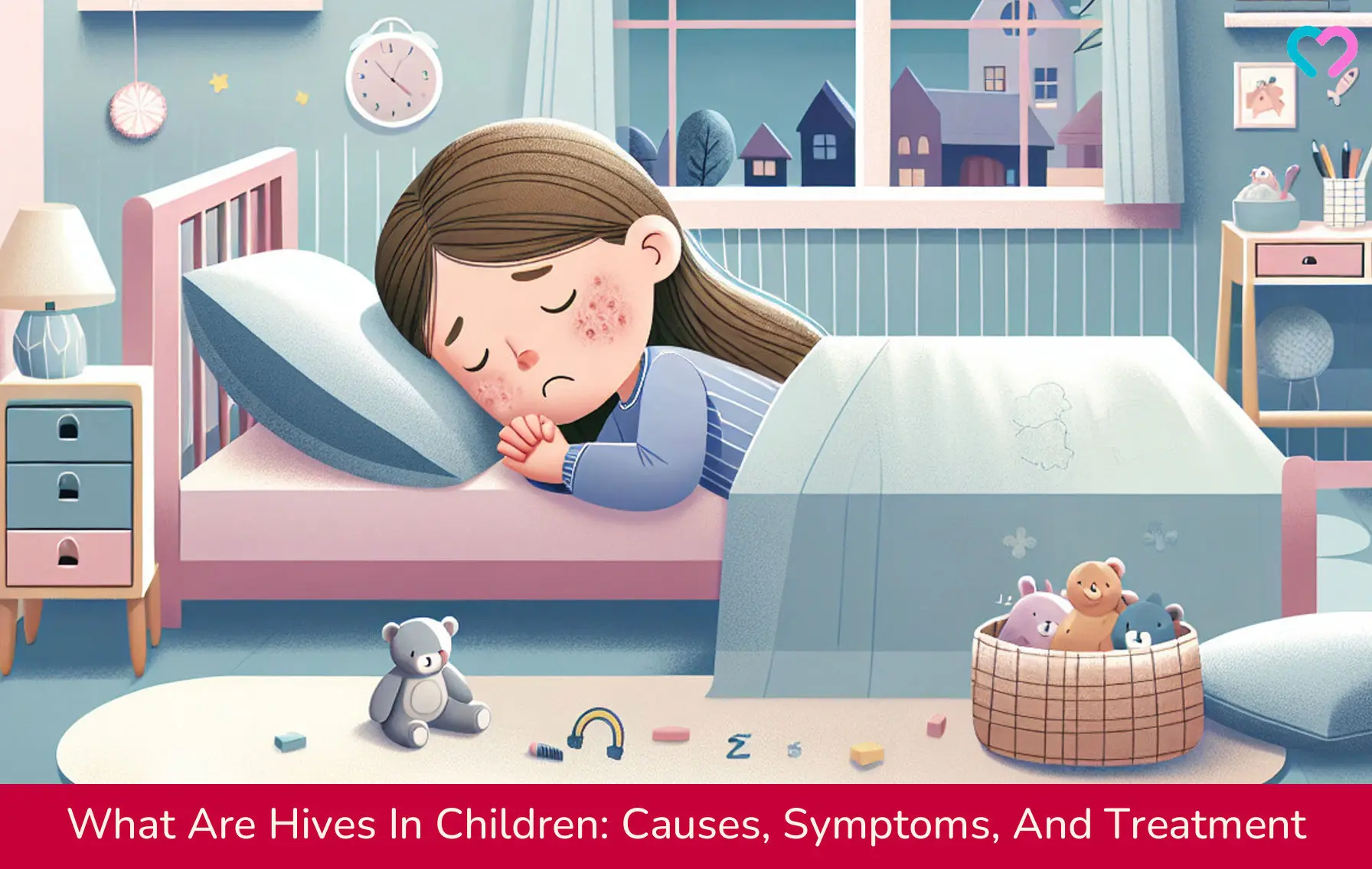
Image: Dall·E/MomJunction Design Team
Examine hives up close and discover their many shapes, sizes, and colours. Learn how to identify hives while receiving important advice to help you do so safely.
References
- Urticaria (Hives) in Children.
https://www.cedars-sinai.org/health-library/diseases-and-conditions—pediatrics/u/urticaria-hives-in-children.html - Hives and swelling.
https://my.clevelandclinic.org/health/diseases/8630-hives - Paul Schaefer; 2017; Acute and chronic urticaria:evaluation and treatment.
https://www.aafp.org/pubs/afp/issues/2017/0601/p717.html - Hives.
https://www.stlouischildrens.org/conditions-treatments/hives - Urticaria (hives): an overview.
https://dermnetnz.org/topics/urticaria-an-overview - Hives.
https://www.seattlechildrens.org/conditions/a-z/hives/ - Angioedema.
https://www.nhsinform.scot/illnesses-and-conditions/skin-hair-and-nails/angioedema - Hives: Diagnosis and treatment.
https://www.aad.org/public/diseases/a-z/hives-treatment - Hives/Urticaria.
https://www.columbiadoctors.org/treatments-conditions/hives-urticaria - Hives: Self-care.
https://www.aad.org/public/diseases/a-z/hives-self-care - Hives
https://acaai.org/allergies/allergic-conditions/skin-allergy/hives/ - Sonali J. Bracken et al; 2019; Autoimmune Theories of Chronic Spontaneous Urticaria.
https://www.frontiersin.org/journals/immunology/articles/10.3389/fimmu.2019.00627/full - Riccardo Asero; 2001; Chronic idiopathic urticaria: a family study.
https://www.sciencedirect.com/science/article/abs/pii/S1081120610619370 - Chronic hives
https://www.mayoclinic.org/diseases-conditions/chronic-hives/symptoms-causes/syc-20352719#:~:text=Symptoms%20of%20chronic%20hives%20include,and%20appear%20and%20fade%20repeatedly - Hives (Urticaria) in Children.
https://www.healthychildren.org/English/health-issues/conditions/skin/Pages/Hives.aspx#:~:text=Hives%20are%20a%20reaction%20to,symptoms%20before%20the%20hives%20begin
Community Experiences
Join the conversation and become a part of our nurturing community! Share your stories, experiences, and insights to connect with fellow parents.
Read full bio of Dr. Shaon Mitra
Read full bio of Dr. Ritika Shah
Read full bio of Swati Patwal
Read full bio of Ghazia Shah





